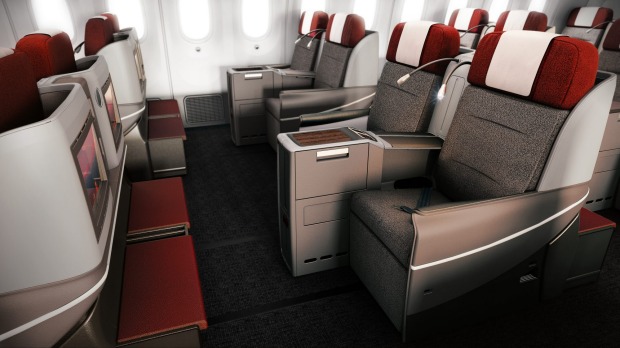While the past decade has seen new generation aircraft in our skies that are more fuel efficient, built using composite materials that are more corrosion free and able to withstand higher cabin pressure, one thing that has barely changed is their operating range.
Current title holder for the longest legs of any aircraft goes to Boeing's 777-200LR, and that's far from new. In service with airlines since 2006, with a range of 17,395 kilometres, this is the aircraft Qatar Airways uses on its 14,535km service between Doha and Auckland, currently the world's longest non-stop flight. Emirates uses A380 superjumbos on its slightly shorter service between Dubai and Auckland as does Air India on its Delhi-San Francisco flights.
In second place on the longest-flyer league tables is the Airbus A340-500, which holds a place in history. Although it has a shorter range than Boeing's 777-200LR, at 16,670km, Singapore Airlines used the A340-500 on its 16,468km flight between Singapore and Newark, which the airline operated between June 2004 and November 2013, still the record holder for the world's longest scheduled flight.
Singapore Airlines' A350 arrives in Australia for the first time
Singapore Airlines' next-generation Airbus A350 has touched down in Australia for the first time.
Another long-range challenger waits in the wings. Next year will see the commercial debut of the Airbus A350-900ULR, which has a range of 17,964km, longer than any other commercial aircraft. This is the aircraft Singapore Airlines will operate on its resuscitated Singapore-New York flights, scheduled to begin in 2018 and once again taking the No.1 spot for world's longest flight.
Although the A350-900ULR can fly 569 kilometres further than Boeing's 777-200LR there may not be too many other airlines keen to take advantage of its range to introduce even longer non-stop flights. Apart from a few dubious routes such as Emirates much-delayed Dubai-Panama City flight, still awaiting regulatory approval, there are not too many more ultra long haul routes on the wish list that make sense.
Two that might are Melbourne and Sydney non-stop to London, and Alan Joyce has been pushing Boeing and Airbus for aircraft that can make that happen, perhaps the ultimate fist-pump moment for the Qantas CEO.
Sydney to London at 16,989 kilometres is slightly longer than Melbourne-London. If that service was to become a reality, Qantas would take the No.1 spot for the world's longest scheduled flight. Although the range of the A350-900ULR is almost 1000 kilometres greater than the Sydney-London distance, even that aircraft might just fall short on account of the minimum fuel requirements stipulated by the European Aviation Safety Authority, and every other aviation regulator. These effectively shrink the maximum operating range of an aircraft since they require enough fuel to be carried to allow for diversions, reserves and contingencies on top of the trip fuel.
Another problem, Qantas has not ordered any of the ultra long range Airbus A350-900ULRs. The airline is awaiting delivery of its Boeing 787-9 Dreamliners, which will be the longest-range aircraft in the Qantas fleet. Currently in third place on the list of the world's longest-range aircraft, the Dreamliner is the aircraft that Qantas will be using to operate its non-stop 14,498km Perth–London service.
See also: Airbus A350 vs the Dreamliner: Which new plane is best on a long haul?
There is also the matter of pricing for longer flights. According to Qantas, "Year round return economy fares for the Perth-London routes start from $2270 but are expected to drop below $2000 during sale periods. Year-round return premium economy fares start from $4250 between Perth and London. Year-round return business fares start from $9725 between Perth and London."
See: Non-stop Perth to London flights go on sale
Does this make sense? Experience shows that passengers are prepared to put up with almost any discomfort if the fares are low enough, but these are not low fares. Qantas is banking on the proposition that passengers will pay a premium for the convenience of a non-stop, 17-hour flight from Australia to London.
If the airline was to apply the same logic to a non-stop service between east coast Australia and London, fares for those flights would be significantly higher than what other legacy carriers charge for a one-stop service on the same route.
Consider that an economy passenger travelling from Melbourne or Sydney on a non-stop flight to London would be sitting in the same seat for 20 hours. By contrast, that passenger could pay less for a 23-hour flight with a one-hour layover, or the possibility of a longer layover with some real recovery time in the sandwich.
When Singapore Airlines operated its earlier Singapore-Newark flights the airline had special lockers installed on the aircraft to store the corpses of any passengers who died en route. That was an 18-hour flight, but the configuration on that aircraft was initially a mix of executive economy and business class seats, switching to an all-business configuration for the final five years that the service operated.
On a 20-hour marathon from east coast Australia to London, in an economy seat, death might be the smart choice.
See also: Captain of the world's longest flight reveals his travel tips
See also: Qantas non-stop flights to London not without problems
NEW EPISODES: Flight of Fancy - the Traveller.com.au podcast with Ben Groundwater
To subscribe to the Traveller.com.au podcast Flight of Fancy on iTunes, click here.












































































































































Comments